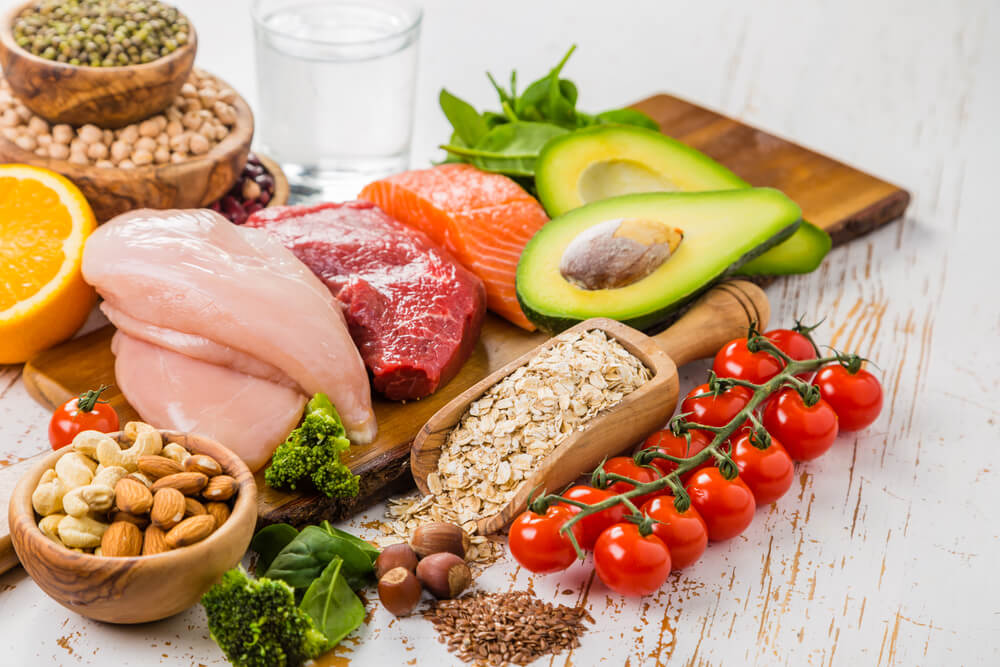Diabetes is a potentially dangerous disease that can result in serious health problems if left untreated. If you have diabetes, you’ll need to control your blood sugar levels by keeping your diet under control and getting plenty of exercises to keep your body fit and healthy.
For a diabetes patient, it’s important to know which foods to avoid and why. While this may seem like common sense, many people with diabetes make the mistake of eating foods that worsen their symptoms and put them at high risk. There are plenty of diabetes diet options out there, but if you want to take control of your own health, you must be aware of the foods you consume.
Carbs
Carbohydrates are the body’s main source of energy, but they raise blood sugar levels if consumed in more quantity. High blood sugar levels are not only a problem in diabetics, but also cause a lot of other health issues.
Rice, pasta, bread, etc can cause high blood sugar levels in people with diabetes as well as heart disease or stroke, especially for those who are at risk. It is recommended that people with diabetes should limit their intake of these foods to less than one meal per day.
Some better options can be included like quinoa, brown rice, and potatoes. These are healthy alternatives to pasta and rice because they contain more protein and fiber. Legumes such as beans, lentils, and chickpeas are a great alternative too!
Sugar
Too much sugar in the diet can lead to high blood glucose levels, which is not only detrimental to health but also leads to complications like blindness, kidney disease, and heart disease. Sugar has oodles of negative effects on the body because it does not provide any nutrients other than energy.

High blood sugar levels can cause diabetes, and even a single teaspoon of added sugar per day could double the risk of developing type 2 diabetes. It is important that diabetics avoid all types of sugar as well as anything with added sugars so they do not get tempted by foods they should not be eating. Avoiding sugar doesn’t mean going with sugar-free tagged products! Have an eagle eye on those products especially.
Fatty meats
When you’re a diabetic, your blood sugar levels are already out of whack. If you take in more fat, it will worsen the situation. The more fat that you consume, the higher your cholesterol level will be and the harder it will be to keep your blood sugar level under control. That’s why fatty meats should be avoided at all costs.
They can cause an insulin spike as well as causing weight gain which is bad news for anyone with diabetes. There’s also research showing that high-fat diets lead to an increase in heart disease risk factors like high cholesterol and high triglycerides which is a double-whammy for diabetics who want to avoid these risks.
Fast food
While fast food may seem convenient, it is not a healthy choice for diabetics. Fast foods have high levels of salt, sugar, fat, and calories- all elements that are bad for diabetics. Fast food also doesn’t provide the nutrients that are essential to diabetic patients.
It is best to avoid fast foods altogether or substitute them with healthier options such as salads or a sandwich. A McDonald’s Big Mac contains 970 milligrams of sodium, 59 grams of fat, and 29 grams of sugar.
To put this into perspective, the American Heart Association recommends no more than 1,500 milligrams of sodium per day and 40 grams (saturated) fat per day. The recommended intake of sugar is 100 grams per day or less. The burger can be replaced with a quarter pounder without cheese, which will save some fat and carbs but still have some protein in it.

For people who want fries with their meal, they can order either apple slices or apple sauce instead to save on carbs. Another option would be to order an egg McMuffin without the sausage patty in order to lower the calorie content while still getting protein from the eggs and cheese.
Alcohol
It is important that diabetic patients must avoid alcohol because it affects blood sugar levels. Alcoholic drinks are not recommended when diabetes patients are on medication or insulin. It lowers their glucose level, leading to confusion, dizziness, and headache.
Even worse is if they get hungry after drinking alcohol. Drinking alcoholic beverages raises the risk of heart disease, stroke, and cancer among other health conditions. People with type 1 diabetes have an increased chance of dying from cardiovascular disease.
A study found those with type 2 diabetes who drank daily were twice as likely to die from heart-related causes as those who did not drink at all. Those with type 1 diabetes should take precautions against hypoglycemia by avoiding alcohol, even though it has zero calories, and may make them feel better in the short term by providing relief from stress and anxiety.
Starchy veggies
A starchy veggie is any vegetable that has a high starch content or is rich in carbohydrates. This includes potatoes, corn, peas, and squash. Starchy veggies are always high in sugar as well. When a diabetic eats these foods it leads to an overproduction of insulin which can lead to low blood sugar levels.
It’s important to eat the protein, carbs, and fats in the right proportion when you have diabetes so you don’t experience high or dips in your glucose levels. If you’re worried about what diet would be best for you, talk with your doctor and nutritionist about what works best for your lifestyle.

There are plenty of different types of foods to enjoy without causing too much stress on your body like fruits and vegetables! They are filled with nutrients and vitamins while being low in calories. Other non-starchy veggies such as cucumbers, peppers, carrots, celery, spinach, and mushrooms can also fill up your plate instead of heavy starches.
They will give you all the nutrients you need but won’t create any fluctuations in blood sugar. You should also stay away from sugary snacks such as ice cream or cake because they will make your blood sugar spike very quickly after eating them.
Foods to eat
Eating a balanced diet is the most important thing you can do to manage diabetes. Most people with diabetes need to limit their carbohydrate intake to a maximum of 45-65 grams per day. Many people who have type 2 diabetes find that a low-carb diet helps them manage their blood sugar levels more effectively.
One thing to keep in mind about this diet is that it does not mean you cannot eat your favorite foods, but rather it means you will need to make some substitutions. For example, if someone wants pasta they would need to eat rice noodles or whole-grain pasta.
If they want white bread they could switch to whole wheat bread instead. It is all about making small changes that still taste good so you don’t feel deprived or like you are missing out on anything! A well-balanced diabetic diet includes lots of fruit and vegetables, legumes (beans), nuts, seeds, fish, and meat as well as dairy products such as cheese and yogurt.

Alcohol should be limited to one drink every other day for women and one drink every day for men. Be sure to talk to your doctor before starting any new medications or changing your existing ones because there may be interactions that affect how these work together.
Conclusion
In short, the worst foods for diabetics are high in fat, high in sugar, or containing a lot of salt. These foods should be avoided by diabetics in order to maintain a healthy diet and lifestyle. It’s important that diabetics eat plenty of fresh fruits and vegetables because they contain nutrients that help lower blood sugar levels. It’s also crucial to drink plenty of water to stay hydrated.
Lastly, diabetes patients should limit their intake of alcohol as it can increase blood sugar levels. As always, please speak with your doctor before changing your diet or lifestyle to make sure you don’t experience any negative side effects.
